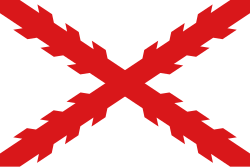This article has multiple issues. Please help improve it or discuss these issues on the talk page . (Learn how and when to remove these messages)
|
Governorate of New Toledo Gobernación de Nueva Toledo | |||||||||||
|---|---|---|---|---|---|---|---|---|---|---|---|
| 1529–1542 | |||||||||||
 Spanish map of the administrative division of New Castile and New Toledo made in 1535 | |||||||||||
| Status | Governorate of the Crown of Castile | ||||||||||
| Capital | Cuzco (Claimed by Diego de Almagro) | ||||||||||
| Official languages | Spanish | ||||||||||
| Religion | Catholicism | ||||||||||
| Government | Monarchy | ||||||||||
| King | |||||||||||
• 1516–1556 | Charles I | ||||||||||
| Governor | |||||||||||
• 1529-1534 | Simón de Alcazaba y Sotomayor | ||||||||||
• 1534–1538 | Simón de Alcazaba y Sotomayor | ||||||||||
| Historical era | Spanish Empire | ||||||||||
| 1529 | |||||||||||
| 1542 | |||||||||||
| Currency | Escudo | ||||||||||
| |||||||||||
The Governorate of New Toledo [1] was a Spanish Governorate of the Crown of Castile formed from the previous southern half of the Inca Empire, stretching south into present day central Chile, and east into present day central Brazil.
Contents
It was established by King Charles I of Spain in 1528. Diego de Almagro was the appointed Spanish royal governor after the failure of Simón de Alcazaba y Sotomayor to establish himself in the area after the Capitulation of Toledo of 1529.
It was replaced by the Spanish Viceroyalty of Peru in 1542.
